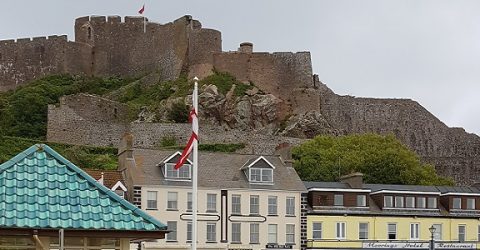What’s the broadband situation on our islands?

There’s often been a descending order of priority when it comes to rolling out telecommunications across the UK.
First, London and the south-east. Then major Midlands and Northern cities. Then central Scotland and south Wales. Then remote counties, then the Highlands, and finally, the islands.
There are over 130 permanently inhabited islands surrounding the UK, from the Isles of Scilly to the Shetland Isles.
If you live in a major mainland city, you might imagine broadband connectivity on these far-flung outcrops would be a pipe dream.
But you’d be wrong.
And while broadband on UK islands lags some way behind major mainland cities in terms of speed, connectivity is less of an issue than might be expected on sparsely-populated outcrops.
Banding together
A few statistics should dispel any notion that working, living or even holidaying offshore will mean taking a Netflix sabbatical and suspending FIFA 20 activities.
The main island in the Orkneys (confusingly known locally as ‘Mainland’) already has over 75 per cent of its premises connected to superfast broadband.
And this is set to increase to 100 per cent under the Scottish Government’s troubled R100 scheme, which aims to extend 30Mbps+ connectivity to as many homes as possible.
Impressive performance is also being achieved in the Channel Islands – one step removed from the UK, yet still part of the British Isles.
Jersey Telecom won an award at the 2019 World Communication Awards for rolling out 3,000 kilometres of 1Gbps Fibre to the Home network across every corner of the island.
The average home in Jersey now has 23 smart devices online, while multinational companies have begun relocating projects to Jersey because they know connectivity won’t be an issue.
Meanwhile, the Isle of Wight sports eight fibre broadband exchanges, from Cowes to Chale Green.
More than one way to stream a cat video
Of course, there are islands where full fibre broadband deals are not readily available, and isn’t likely to be for a while yet.
Happily, FTTP and FTTH connectivity isn’t the only way to obtain broadband on UK islands.
From 5G trials on Orkney to a Vodafone network on the Isles of Scilly, the fifth generation of cellular connectivity offers the prospect of broadband-beating connection speeds.
GuideHow do you deliver broadband on an island?
And if 5G isn’t available, a 4G-powered MiFi hub can support several wireless devices at once.
Even sparsely-populated Hebridean islands like Benbecula and North Uist benefit from 4G network coverage around their main population centres.
Then there’s satellite broadband, with a number of new providers set to enter this market as UK-based spaceports drive down the cost of low earth orbit satellite launches.
If obtaining broadband on UK islands is a priority, you’re unlikely to be forced offline, or made to endure connectivity reminiscent of dial-up services.






